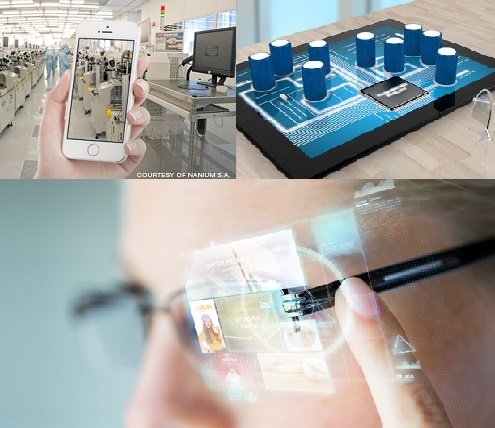Augmented reality, which stands in stark contrast with virtual reality, basically applies to real world situations where the actual physical environment of a user is supplemented by computerized inputs (in the form of data, sound, graphic and video). This allows the user to grasp a more detailed understanding of the subject matter in-front of them, as information is provided in real-time.
Virtual reality on the other hand tries to replace reality by providing a completely different environment for the user, which is not related to the current physical environment of the user. Both Augmented and Virtual reality have many applications in the modern world, but our focus today would be mainly on how augmented reality affects manufacturing and can potentially change how things are done in your plant today.
Devices which would allow users to experience augmented reality range from, glasses to head gear and standard electronic-tablets. Many companies including Google and Microsoft are working on these gadgets and sooner or later they will become a part of our daily lives. We will try and provide a scenario where the concept of augmented reality meets manufacturing IT applications like the MES/MOM, ERP, SCM & CRM.
So imagine a modern plant with highly automated production lines and where state-of-the-art IT applications are in place to execute and control the operation, right from machine level automation PLC/Scada, to mid-level operation like the MES, to higher level organization applications like the ERP. When we bring augmented reality in the picture, the operation completely transforms, as updates become even more real-time in nature and information is relayed at all times, while the process gets executed.
Say a shift supervisor enters a production line and is carrying his iPad along, or even better is wearing his Google glasses. Now, these devices are already synchronized with the MES application which executes the plant’s operation. Let’s try and imagine what the supervisor will see and how this will help the operation in its entirety.
As soon as the supervisor enters the plant, the device displays current production orders being executed, plan for the shift, day, week and month. After checking this, he zooms in on a particular equipment, say a bottleneck, like an Oven, which needs to be used for all orders in the production line. All information relating to orders processed, output/efficiency, maintenance schedule and current operator populate on the supervisor’s display.
At this point the supervisor may decide to re-schedule the maintenance considering the performance or he may schedule the operator training seeing that there is a variance in the time for which each lot is being treated in the equipment and this may have an effect on the product quality.
As the supervisor moves, he is directed by the MES application to have a look on an ongoing trouble shooting exercise for another major robotic arm in the same line. the MES may shoot an alert and also guide the supervisor directly towards the equipment, once there the problem is displayed on the device being used and the whole history of the equipment can then be viewed, which would allow the supervisor to take a call on whether the part needs to go or can be repaired and brought back to providing optimum output.
All info is being relayed to the concerned personnel on the go, which means that the access information is no longer a function of a work area or a computer screen, it is instantaneous and detailed due to the combination of augmented reality and the MES.
Imagine that the supervisor suddenly sees material from a particular supplier and cross references it with the quality complaints received for that particular part or assembly. He then views the current yield and decides the supplier needs to be called for a meeting. He may even hold the next order through the SCM application, which would automatically trigger an alert for the procurement team and the operator to sort the issue with process management.
Now imagine that the user wants to locate a particular equipment, personnel or material, and the MES guides him through the plant Or when a quality issue is detected by the supervisor on the move, they may take a picture and share it through the MES, for the R&D to address. The R&D may receive the info along with a description of the issue and the whole production history up until the issue was finally detected. This would allow them to analyze the data and provide improvements faster than ever and also suggest a product/process change to avoid future issues.
The MES may also trigger contingency plans and containment procedures with a manager’s approval once a quality issue is reported by the supervisor and provide alerts to all personnel concerned with the plan, so that they may act immediately to contain the said quality issue.
Information truly will be at the fingertips of the process owners. Once augmented or supplemented reality enters the manufacturing world, it will have the potential of making operations operate in a more coordinated, lean and structured manner, with all vital events catching the ‘eye’ of the concerned personnel.
As we go along, we will see a series of articles on Industry 4.0, which in a way encompasses the applications of augmented reality along with other potential disruptions and breakthroughs which will together change manufacturing forever. More on that later stay tuned!!
See also White Paper: Manufacturing Software for Industry 4.0.Embracing Change and Decentralization for Success by Iyno Advisors and Critical Manufacturing.
Industry 4.0 offers an unprecedented opportunity for transformational success, but companies must have plant floor software that is ready for that journey.

